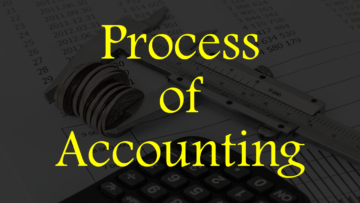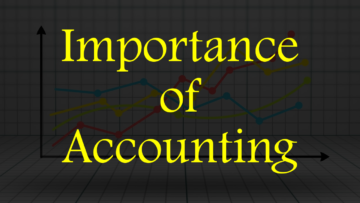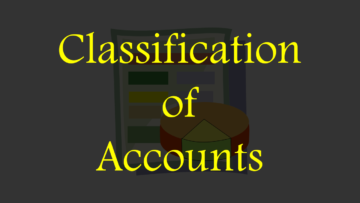Managing transactions in business is a challenging task as even a small mistake can change the outcome of the transaction. This problem increases even more if there is a large number of transactions in the business, that is why accounting is used to systematically manage the transactions in the business. To systematically manage transactions in accounting, has to go through several processes which include identifying, measuring, recording, classifying, summarizing, analyzing, interpreting, communicating, etc. transactions.
Due to increasing technology, accounting in business has become easier as transactions can be managed quickly and accurately through technology. For example, as inputs are entered in accounting software, it automatically provides output forms such as Journal Entries, Ledger Accounts, Trial Balance, Trading Account, Profit and Loss Account, Balance Sheet, etc. By using technology, accounting expenses can also be reduced.
Note: Due to increasing technology, manual work is decreasing.

Table of Contents
Process of Accounting
Following are the process of accounting:
1. Identifying:
Identifying transactions is the first and most important process or step in accounting because the process of accounting does not start without identifying the transactions. Identifying transactions means identifying monetary and non-monetary transactions, business and non-business transactions, etc. Accounting involves only monetary transactions.
2. Measuring:
After identifying the transactions, the next process is to measure the identified transactions. Measuring transactions means measuring transactions according to the currency of the country because every country has a different currency and the value of that currency is also different. This process is mainly used when transactions are made from another country.
3. Recording:
After measuring the transactions the next step is to record the measured transactions in the journal book with the help of the concept of journal. For convenience, the Journal Book is divided into various subsidiary books like Cash Book, Purchase Book, Sales Book, etc. All transactions of similar nature are recorded in the respective books, such as all sale transactions are recorded in the sales book, similarly, all purchase transactions are recorded in the purchase book, etc.
4. Classifying:
Classification means dividing transactions according to nature or account. After recording the transactions in the journal book the next step is to classify the transactions recorded in the journal book into ledger accounts. Separate ledgers are maintained for each account or nature and related transactions are recorded in the respective ledgers.
5. Summarising:
After classifying the transactions into ledger accounts the next step is to convert (summarize) the ledger accounts data in various forms. It includes trial balance, income/financial statement (e.g., trading account, profit and loss account, balance sheet, etc.), etc. This stage helps in understanding the business conditions as all the necessary reports are prepared in this stage, like trial balance, income/financial statement, etc. The bookkeeper’s work ends here.
6. Analysing:
After summarizing the ledger account data, the next step is to analyze the summarized forms like trial balance, income/financial statement, etc. By doing analysis can know more about the business like what is the condition of the business, what are the strengths and weaknesses of the business, how and by what the business can be expanded, etc.
In the accounting process, the main functions of management start with analysis as the initial process can be done by anyone who has basic knowledge about accounting but with the advent of technology it has become even easier.
7. Interpreting:
After analyzing the summarized forms, the next step is to interpret the analyzed data. Analyzing and interpreting are mental processes because both require the ability to think. In this process, many reports are prepared which tell about the business like what happened in the business, why it happened, for what reason it happened, since when did it happen, etc.
8. Communicating:
Communication is the last step in the process of accounting and it is done after the interpretation of the analyzed data. Once all the reports are prepared, they are communicated to the right people such as owners, shareholders, creditors, lenders, etc., as these are the people who are interested in the business.
Read Also:
QNA/FAQ
Q1. What is identifying in the process of accounting?
Ans: In the process of accounting, identifying means identifying economic and non-economic transactions, business and non-business transactions, etc.
Q2. What is recording in the process of accounting?
Ans: Recording the transactions in the journal book with the help of the concept of journal is called recording.
Q3. What is classifying in the process of accounting?
Ans: Classify the transactions recorded in the journal book in the ledger accounts is called classifying.
Q4. What is summarizing in the process of accounting?
Ans: Converting ledger accounts data into different forms like trial balance, trading account, profit and loss account, balance sheet, etc. is called summarizing.
Q5. Write the process of accounting.
Ans: Following are the process of accounting:
1. Identifying
2. Measuring
3. Recording
4. Classifying
5. Summarizing
6. Analyzing
7. Interpreting
8. Communicating













